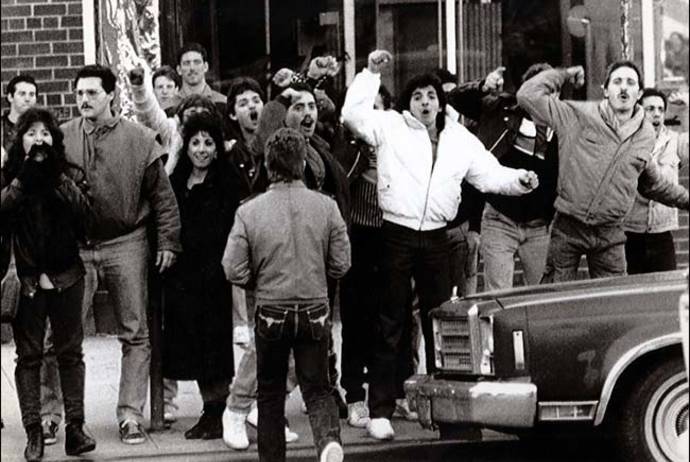Mention the word “mafia” to any Italian American in New York and a few typical responses will resound from them. The Godfather theme song might resonate in their throats, or outer borough neighborhoods like Howard Beach and Belmont might be referred to as centers of mafia. Few people will cite a legitimate fact about the mafia and its history in New York, much less know about Joe Petrosino, who was the first Italian American police lieutenant and fought the Black Hand in New York.
It is not shocking how little Italian Americans as know about historical figures of their own ancestry, like Joe Petrosino, who represents positive aspects of our culture and heritage. I am one of the many Italian Americans who lacked knowledge of Joe Petrosino. One reason for this ignorance is the profound grip that the popular media has on our perception of heritage and identity. Often it is the media that provides youth with an idea of who they are, what their culture is supposed to be like, and what roles to fulfill if they are to assimilate into the bulk of their own ethic group. We learn from movies and television what to emulate, at least when we are impressionable children growing up in a big city like New York.
I grew up in Ozone Park, an Italian American neighborhood in Queens. The
reputation of my neighborhood and Howard Beach (one mile away) as being centers of mafia activity had a huge influence on the youth growing up there. My peers and I were exposed to ‘typical’ depictions of Italian Americans. The boys were supposed to be masculine, tough, and underhanded. As for the girls: submissive, perky and pretty, and ditsy were the traits to attain. I saw guys act tough and quote lines from Goodfellas all the time. The girls who did not conform to the ditsy and pretty expectation, as presented in films and on TV, were often shunned and mocked by the males.
Looking back on my childhood, I see what a profound effect the media had on the Italian American peers I grew up with in south Queens, and how many of my friends tried to conform to the ‘guido’ stereotypes. I remember one time riding my bike to Howard Beach and being made fun of because I had a ‘boy’s haircut’ at the time. Even though I am an Italian American, can speak Italian and have a strong connection with my heritage, I do not fit into the ‘tan and blond’ mold that so many Howard Beach girls comprise. Therefore, I was an outsider.
Sure, we may love pasta and our families; some stereotypes hold validity. Yet we should know the truth about our own heritage and defeat ignorant stereotypes before they spread further. We can do this by learning about real Italian Americans in history, like Joe Petrosino. In addition, we can reject the negative images that the media portrays, and chose to define ourselves as individuals.
Teaching future generations of Italian Americans about heroes like Joe Petrosino contributes to the positive image of Italian Americans. Yes, John Gotti and his associates did operate in Howard Beach, and hate crimes have been committed there. This does not mean everyone living in the vicinity is a bigot, nor should kids growing up in these areas strive to be ‘wise guys.’ One of my best friends is African American and refuses to ever step foot in Howard Beach for fear of being beaten up. This exemplifies the negative images of Italian Americans that dominate pop culture and need to be put to an end.
The exhibit on Joe Petrosino shows us that there are figures in Italian American history who fought for justice, worked hard and honestly, and strove to make New York a decent city. The facts show that nowadays many Italian Americans are educated professionals that earn honest livings. If Italian American parents use education as a tool to defeat ignorance, we can resume control of our own identities and prove the media wrong. As far as reconstructing a positive image of Howard Beach, we have a long way to go.































